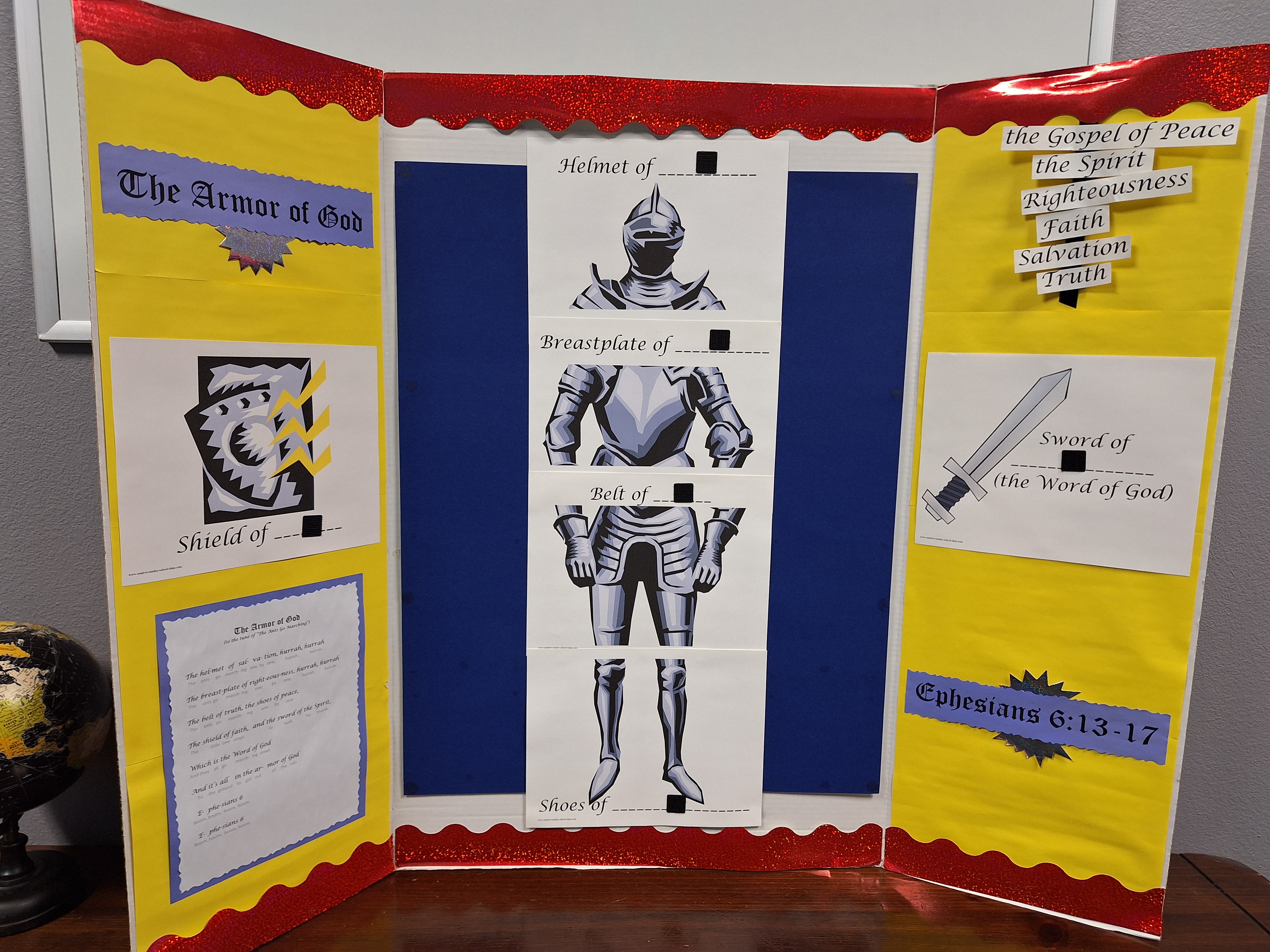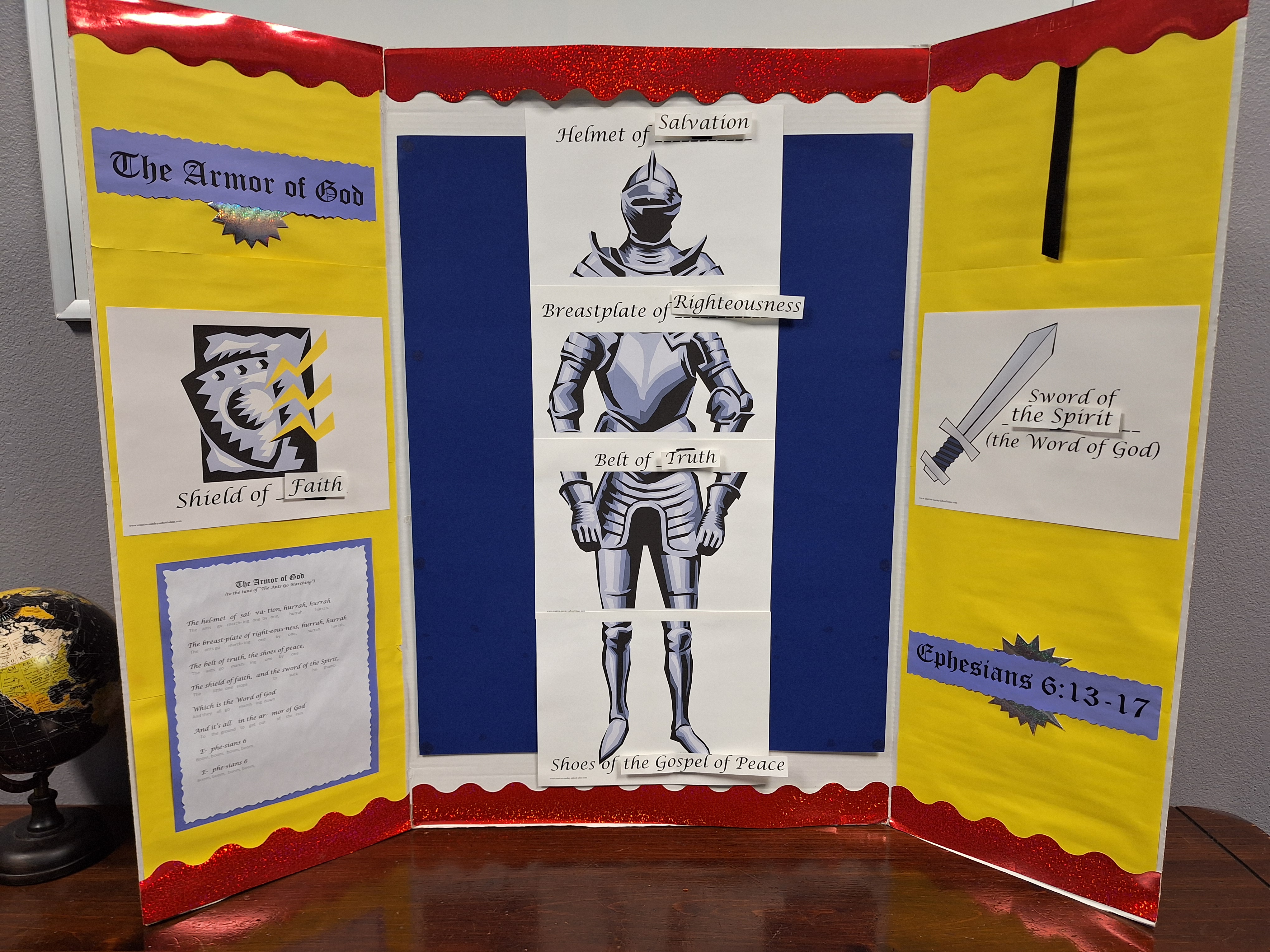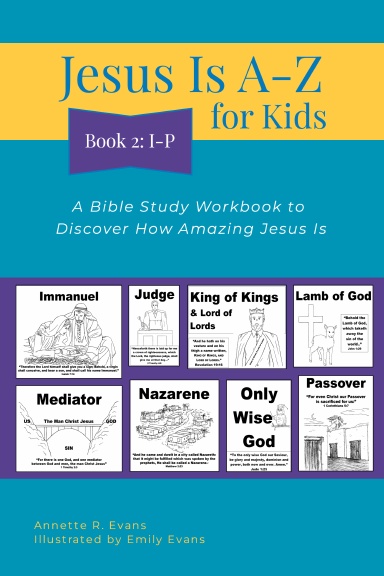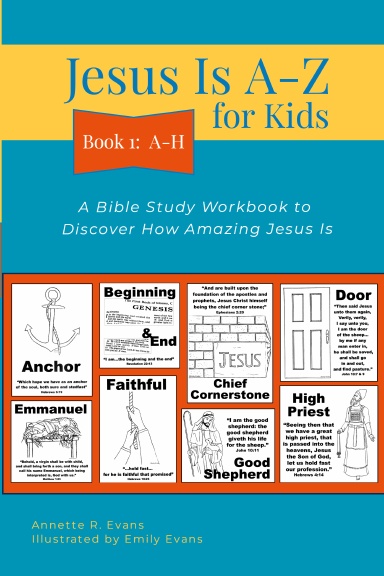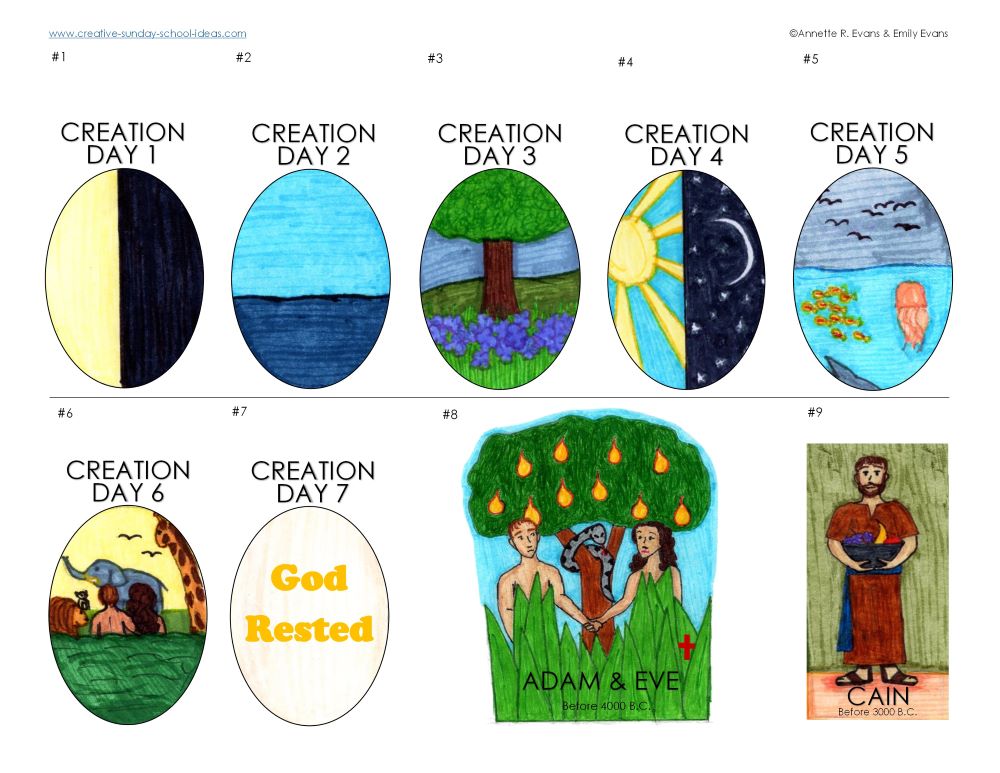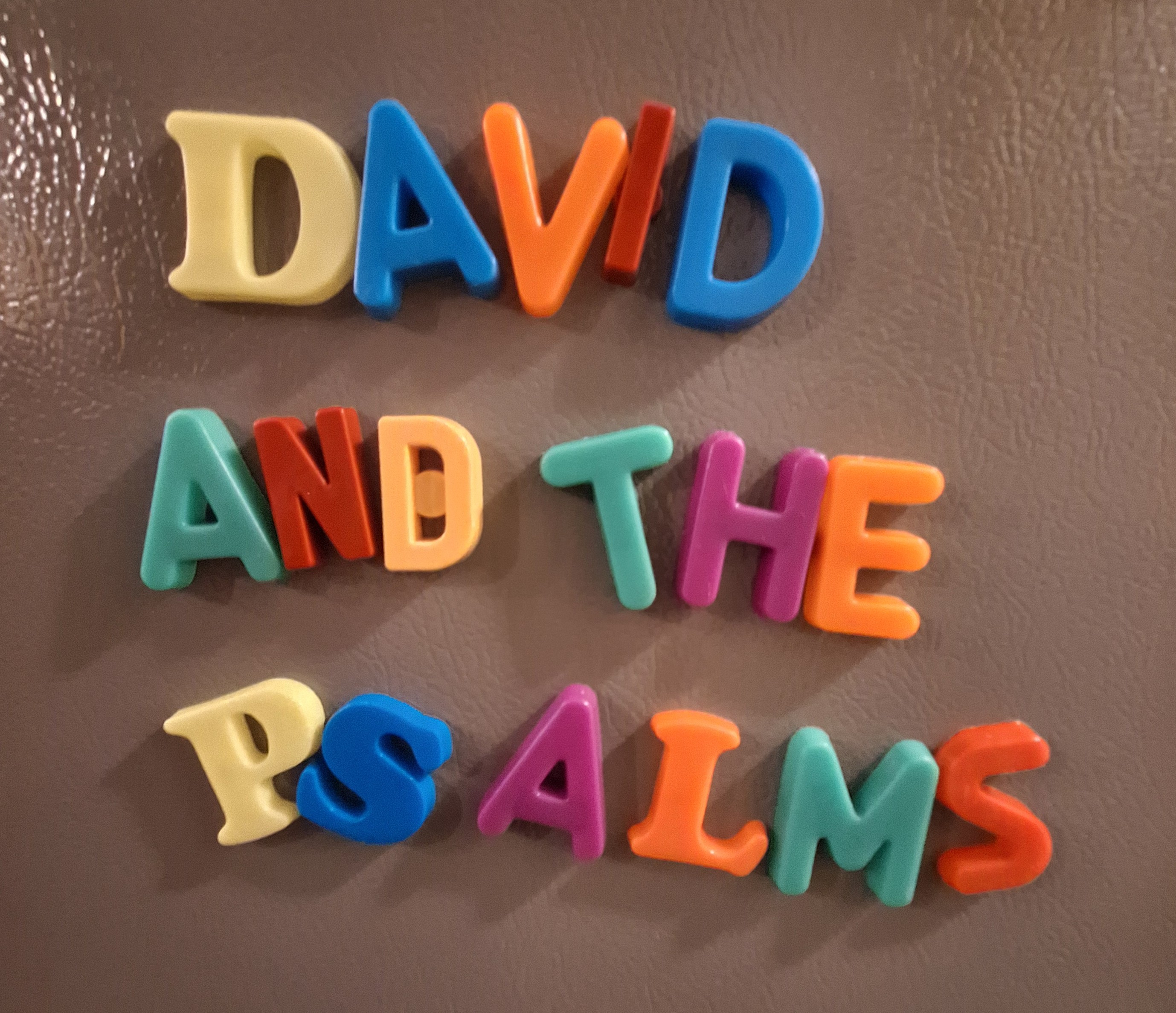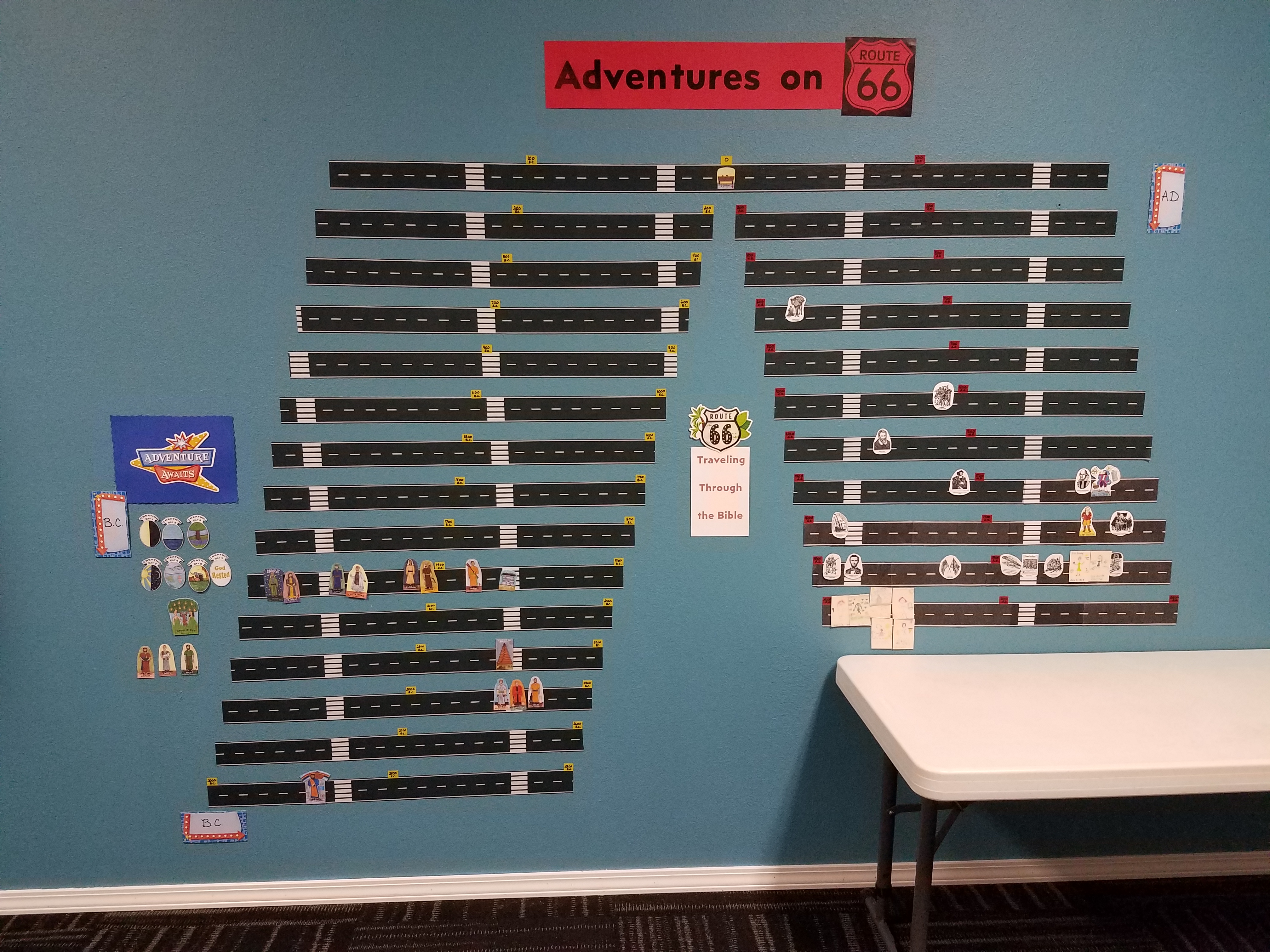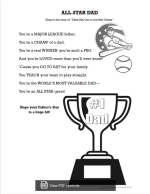Armor of God Curriculum
This nine-lesson curriculum on the Armor of God begins with a lesson identifying the battle and the enemy. The next six lessons cover the six pieces of armor as listed by the Apostle Paul in Ephesians 6. The eighth lesson discusses how to be a good soldier, and the ninth lesson is a review of the entire series.
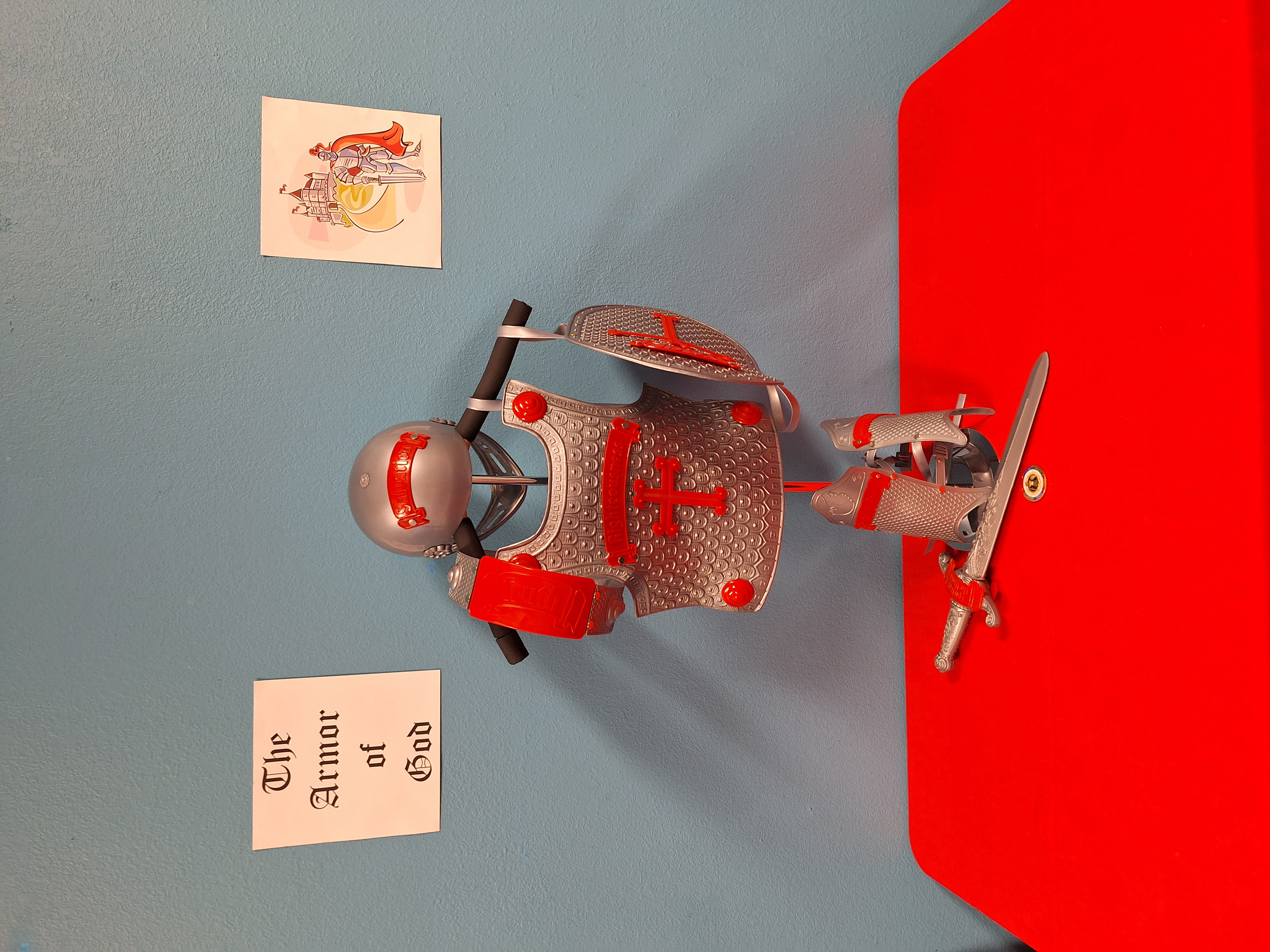
You will need an Armor of God costume to use over the course of the entire series, such as this set from Christianbook.com. Try to find a way to display the armor that will also allow you to easily remove the pieces and have students put them on during different parts of the class. (I found a t-shirt display stand at Amazon that worked to display our set.)
You can also print these Armor of God visuals and place them on a display board or piece of posterboard. You can cut out the words at the end and place velro on the back of each word, as well as on the blank spaces. Mix up the words and see if the students can put them in the correct spaces.
Most weeks, the students will make a piece of the Armor of God during ACTIVITY/SNACK time. The activities in this curriculum are more craft-focused than in most of my curricula, so you will want to look ahead to see what supplies are needed in future weeks. You might want to assign someone to just focus on crafts during this series. Also keep in mind that the ACTIVITY/SNACK portion of the class may take more time than usual.
Lessons in The Armor of God curriculum are written to fill 1-1/2 to 2 hours and follow this basic schedule:
- 20-30 minutes Large-Group Memory Work
- 10-15 minutes Small-Group Memory Work
- 10 minutes Review
- 10-15 minutes Worship
- 5 minutes Rules & Prayer
- 20 minutes Bible Lesson
- 10 minutes Bible Skills
- 15 minutes Activity/Snack
As mentioned earlier, the crafts will take up more time than our activities usually do; therefore, you may need to adjust other times accordingly. Sometimes we switch BIBLE SKILLS with ACTIVITY/SNACK to make sure we have enough time for the craft.
LARGE-GROUP MEMORY WORK
At the beginning of class, while students are gathering in, we usually set aside some time for the kids to play chess and checkers. (They can also play at the end of class if they have finished their craft and time allows.)
We work with the entire group to memorize the pieces of the Armor of God. An Armor of God song is taught during the BIBLE SKILLS portion of Lesson 2 and then reviewed during LARGE-GROUP MEMORY WORK time on subsequent weeks. We also use the Armor of God visuals as discussed above, having students match the correct words to the different pieces of armor.
During this time, we also work on learning the books of the Bible, as well as reviewing Psalm 1 or another memory work passage we have learned in the past. We also sing Memory Work songs that will help students quote verses when they go to smaller groups to work on their individual memory work.
Do various activities each week, depending on what you want to emphasize and what your students need the most help memorizing.
SMALL-GROUP MEMORY WORK
During this time, divide the class into smaller groups, a few students per teacher. Have each student work through a list of six verses at his/her own pace, quoting one at a time, then two at a time, etc., until ready to test on all six verses at once. Teachers assist students as needed, and students quote verses to teachers when they are ready. Our kids really enjoy this time of more individualized attention and interaction with the teachers.
We have charts (each student has a folder to keep his/her charts in) so that we can initial verses as kids quote them. We also note their scores when they test. Students receive 3 points if they quote a verse perfectly and 2 points if they need help starting the verse or make minor mistakes and don't self-correct. They must score at least 15 points to pass. When they do, they get to choose a prize out of the prize box.
My “Bible Memorization” page has more information if you need ideas in this area. I have charts that I have made for our students, and I will try to add those that page soon, so you can print and use the verses we do, if you wish.
REVIEW
Anything worth teaching is worth reviewing. We want our students to remember the things we have been learning, cumulatively, throughout the series and the year. We use questions taken from previous lessons, often incorporating them into a quick game to make REVIEW a fun and interactive time.
WORSHIP
Sing several songs--some energetic, some worshipful. A good resource for worship songs with word-for-word Scripture is Seeds Kids Worship.
RULES & PRAYER
Have a basic list of about five rules (see example). Review these quickly and pray with the class to help them focus right before the BIBLE LESSON.
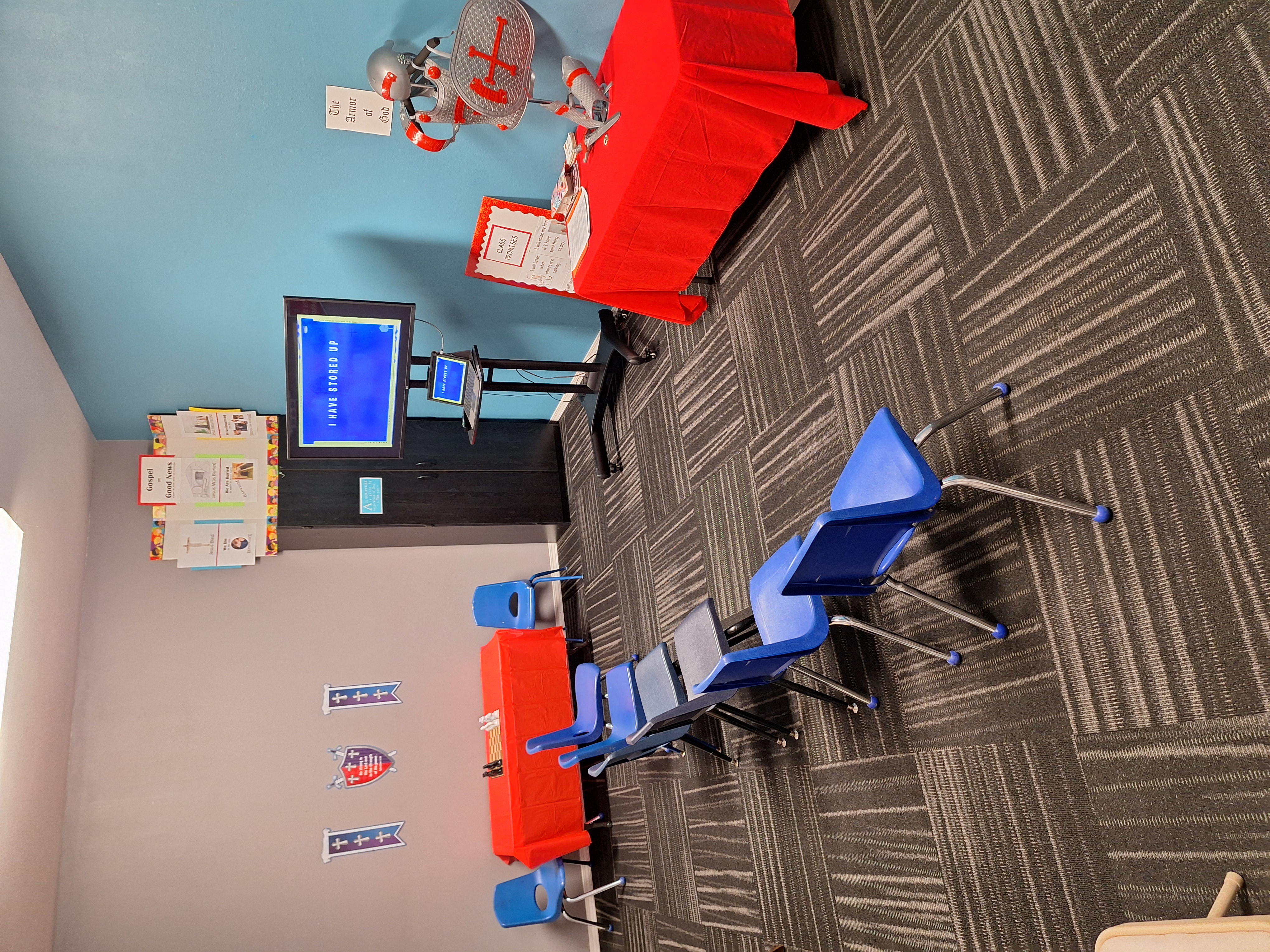
BIBLE LESSON
The BIBLE LESSONS use a variety of techniques to engage the students, such as props, skits, or PowerPoint presentations. I tend to ask a lot of questions in my lessons. Some are open ended, intending to invite discussion, and some have specific answers. I also stress reading verses directly out of your Bible during the lesson, setting an example for your students.
The BIBLE LESSONS are scripted with words you are to say in bold and suggested answers in italics. Highlighted words are
actions you are to take. All BIBLE LESSONS end in prayer as it is so
important to give the kids an opportunity to respond to the BIBLE
LESSON.
BIBLE SKILLS
This is the portion of the class where kids get hands-on with the Bible, learning how it is organized and practicing looking up verses. We purchased a case of Bibles to have on hand in our classroom. However, students should be encouraged to bring theirs from home if possible. The goal is to become familiar with and learn to love your very own Bible! We use a Books of the Bible demonstration board to assist students during this portion of the class.
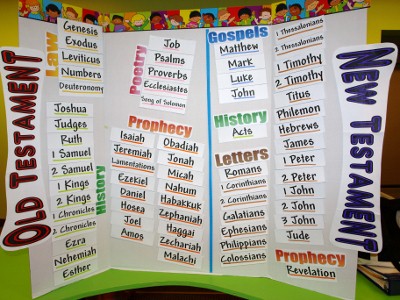
ACTIVITY/SNACK
As mentioned earlier, this series of lessons on the Armor of God is more craft-focused than usual. The kids enjoy making pieces of armor that they can actually wear. You might want to have one specific person in charge of crafts, looking ahead to make sure the appropriate supplies are on hand in plenty of time.
PUTTING ON THE ARMOR OF GOD
I pray your students will enjoy learning about and putting on the Armor of God. One of the best things we can do is equip them for their lifelong battle against the enemy of their souls, helping them to realize God has supplied everything they need to win!
Armor of God Lesson Links
Lesson 2 - The Helmet of Salvation
- Armor of God Song - written lyrics
- Armor of God Song - audio recording (plays via QuickTime Player; not sure about others)
Lesson 3 - The Breastplate of Righteousness
Lesson 5 - The Shoes of the Gospel of Peace
Lesson 6 - The Shield of Faith
Lesson 7 - The Sword of the Spirit
- Jesus Defeats the Devil skit
- Inflatable swords: check www.orientaltrading.com
- Word of God tags
- Sword bookmarks
Lesson 9 - End-of-Series Review
- Subscribe to "Annette's Notes" to receive periodic emails containing ideas and inspiration for teaching kids the Bible. Rest assured we will never sell or give away your email address.
